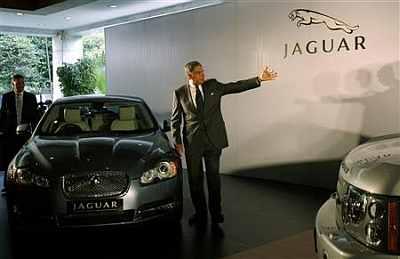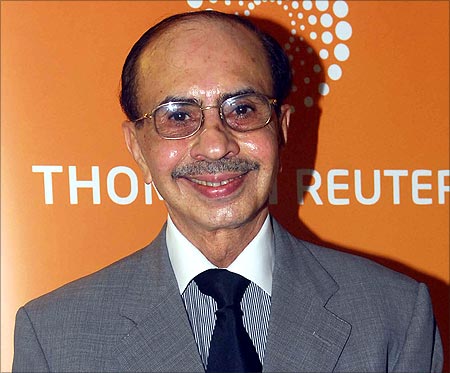 | « Back to article | Print this article |
How Indian firms can succeed in foreign markets
Ritesh Kumar works for a Rs 1,000-crore (Rs 10 billion) fast moving consumer goods (FMCG) company. He's a vice-president there and has recently been given charge of pushing the company's interests abroad.
This is a break that Kumar has been seeking for long. He gets down to the task, hiring consultants to study the potential markets for his products.
Yes, the markets where his firm currently exports could be a good place to start. Kumar also realises that speed is critical: a rival company has already set up a subsidiary abroad with two manufacturing units already in operation.
Many questions need to be answered: is it a good idea to venture abroad now? Should the company go alone or with local partners?
Is the distribution channel in that country similar to India?
Click NEXT to read more...
How Indian firms can succeed in foreign markets
For many companies, this is a familiar scenario. After years of serving the domestic market, many companies begin sniffing for opportunities beyond their boundaries to sustain the growth momentum.
Like Kumar's company, for many in the FMCG, auto or allied sectors, the first reference point are the markets they've been exporting to.
While such markets may look familiar, many companies find that once they get down to the brass tacks, all the scenario thinking and assumption-based planning takes them only up to a point.
The experiences of companies such as Marico, Dabur, Mahindra & Mahindra and Airtel offer some interesting insights into the idiosyncrasies of consumer markets and how to deal with them.
Click NEXT to read more...
Click NEXT to read more...
How Indian firms can succeed in foreign markets
As an international marketing head of an FMCG company points out, "When people say international markets and consumers are different, what they mean is the culture there is different from what we encounter in India. It is this culture that determines what people buy and wear, how they conduct themselves at the market or the workplace. This throws up unique challenges in hiring, communication, distribution... indeed every step of the way."
The biggest challenge remains identifying talent and being able to deploy resources adequately.
Arvind Singhal, chairman, Technopak Advisors, a retail and management consultancy, says that barring a few examples such as the Tatas or the Aditya Birla Group, most companies have struggled to retain a strong bench of people simply because they remain small in the global scheme of things.
Click NEXT to read more...
How Indian firms can succeed in foreign markets
Other issues, regulatory hurdles, for instance, remain a challenge in many countries.
"This can add significantly to the cost incurred by a company, if it has to rework the production lines or open up new facilities in foreign markets," says a senior executive with an FMCG firm, which has presence in South East Asia, West Asia and Sri Lanka.
Adds a corporate trainer based in Delhi, who has consulted with many companies that have gone international, "At home, you would interview a candidate two/three times, do back-ground checks on each, and do a final round of interview before you hire them," he says.
Click NEXT to read more...
How Indian firms can succeed in foreign markets
"Be equally diligent when meeting with potential agents/distributors overseas. One of the local suppliers for our client X, for instance, had this notion that Indians were not sticklers for quality. So what he supplied was below par. This meant dropping this partner, scouting for a new one and the whole process delayed my client's project in a big way."
A crucial decision in the process is to figure out how long the company is willing to wait for the venture to turn profitable.
This also determines how much a company is willing to invest, whether it wants to join hands with a local player or acquire a local brand. The third key element is getting the right mix of peop#8804 seasoned hands from the home base or local hires.
It is imperative that you take a moment to survey the playfield before you pop your money in the coin slot because there are a lot of targets and ball paths at the top.
Click NEXT to read more...
How Indian firms can succeed in foreign markets
<B>Identify the need gaps</B><BR>
In a conversation with Business Standard recently, Rajeev Batra, professor, marketing at the University of Michigan, USA, who co-authored the book, The New Emerging Market Multinationals: Four Strategies for Disrupting Markets and Building Brands, said that many Indian companies seek international markets similar to their home turfs, since they are comfortable there.
"Consumer profiles and segments are similar so that's what drives them to go after these markets," he says. Examples of such companies include Asian Paints, Marico, Dabur and Godrej Consumer Products Ltd (GCPL).
Click NEXT to read more...
How Indian firms can succeed in foreign markets
Some others have used a combination of flexible manufacturing and low-cost research and development to come up with solutions.
This has been a favourite of companies that have lacked the scale and size to compete with the big boys abroad. Some Indian companies have also used the global brand-building strategy well to go the inorganic way.
A case in point: the acquisition of Jaguar Land Rover by Tata Motors, which ensured that marquee British brands were now part of the company's portfolio, known for trucks, cars and utility vehicles.
But acquisitions have also remained a means by which companies have not only acquired brands, but also skill-sets, and entry into specific categories, says Batra. Marico's acquisition of Derma Rx in Singapore, for instance, gave it the much-needed knowledge and wherewithal in the premium skincare market.
Click NEXT to read more...
How Indian firms can succeed in foreign markets
In Dabur's case, the acquisition of Hobi Kozmetik in 2010, in Turkey, was intended to give it a foothold in that market, since that was the best way to approach it, according to PD Narang, group director, Dabur India.
The acquisition of Namaste in the US by Dabur was intended to help the company find its way to Africa since Namaste was an ethnic hair products maker in the US, Nigeria and South Africa.
GCPL, on its part, has used acquisitions to enter new markets in three geographies – Asia, Africa and Latin America.
Adi Godrej, chairman, Godrej Group, has repeatedly said that the company has a three-by-three strategy looking at the three different continents and three product segments, including hair colour, personal wash and household insecticides.
Click NEXT to read more...
How Indian firms can succeed in foreign markets
<B>Importance of staying flexible</B><BR>
Companies need to be flexible enough to pick up the early warning signals and make necessary corrections.
Dabur, in fact, decided to set up a physical presence in its export markets after its strategy began to waver.
The company had decided to tap some markets in West Asia in the 1980s and the route it took was exports. The company soon found that this led to inadvertent delays and subsequently loss in business.
Says Narang, "In a sense, our journey really began in 1990 when we set up a unit in Dubai. We had to plug the issue of delays that led to losses. So we launched a unit there...it opened up a world of possibilities for us."
Click NEXT to read more...
How Indian firms can succeed in foreign markets
Dabur learnt early that while taking super-hit products from India to new markets, especially in the Middle East, wasn't a bad idea, developing new ones were equally important.
This learning led to the development of products such as Haman Z, a hair care regimen, which does well in the West Asia.
The second issue was packaging and communication. Once Dabur went back to the drawing board to develop new product ideas, it emphasised on the "look and feel".
Result: sleeker packaging with bolder motifs. "We also began advertising on local channels and focused on distribution," says Narang. Today, Dabur derives 30 per cent of its Rs 5,305-crore turnover (topline for March ended 2012) from international operations spread across the Middle East, North Africa, East Europe and Asian regions.
Click NEXT to read more...
How Indian firms can succeed in foreign markets
For Marico, the whole issue boiled down to hard-sell.
Vijay Subramaniam, CEO, international business, Marico Ltd, says, "In the 1990s, we largely exported our products to other countries from India. It was in early 2000 that our thrust on international markets grew and we changed our approach from trading to brand-building. Our business grew from Rs 90 crore to Rs 960 crore in a decade. Today, the international business contributes 24 per cent to Marico's total turnover, which five years ago was just about 7-8 per cent."
Click NEXT to read more...
How Indian firms can succeed in foreign markets
For Mahindra & Mahindra, the challenges were different. "Many countries tend to protect their local industry," says Ruzbeh Irani, chief executive, international operations.
"In Brazil, CKD localisation is essential to be competitive. In advanced markets, emission and other regulatory norms challenge players coming from developing countries like ours. In Africa, foreign brands have already made strong inroads, so the task is difficult."
Click NEXT to read more...
How Indian firms can succeed in foreign markets
Indian multinational Bharti Airtel's acquisition of the African operations of Kuwait-based telecom major Zain in 2010 met with issues similar to M&M's.
This was an acquisition that gave Bharti access to 15 markets in Africa, making it the fifth-largest wireless company in the world. Predictably, a buy valued at $10.7 billion, was never going to be easy. Bharti ran into legal and regulatory hurdles in countries such as Nigeria, Congo and Gabon.
While in Congo and Gabon, respective governments raised a red flag to the deal, in Nigeria, Econet Wireless, a former partner and five percent shareholder in Zain, moved court saying it was not consulted on the transaction.
Click NEXT to read more...
How Indian firms can succeed in foreign markets
Though Zain's Nigeria operations were rebranded as Airtel Nigeria, a Nigerian court, in early 2012, ruled in favour of Econet. The matter is yet to be resolved.
Bharti continues to face challenges in terms of managing the work force and operations in complex markets like Africa where cross-country differences are high, say industry experts. Also, Bharti has to contend with poor infrastructure, import curbs as well as government intervention.
Despite the hurdles, companies are hunting for opportunities abroad. Abneesh Roy, associate director, research at Mumbai-based brokerage Edelweiss, says, "For consumer-facing businesses, growth in international markets is higher than domestic markets, easily over 20-25 per cent... primarily why they have been making a beeline abroad."
Thorough ground-work, a well-executed plan, patience, he says, can help a company build and sustain new international markets.













